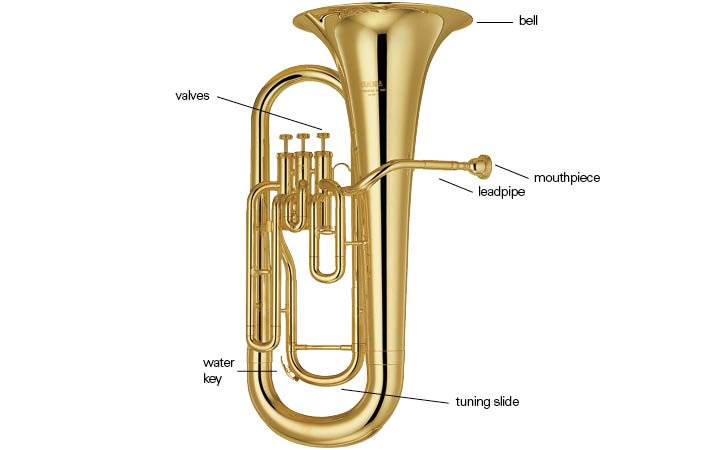September 11, 2019
Euphonium
Euphonium Breakdown


The modern baritone and euphonium was constructed around 1828. It was during this time that the first brass instrument family with valves was created. Similar to the voice of a cello in a symphony orchestra, euphoniums have a rich and deep sound, and overtime they’ve grown to be more popular than baritones. However, baritones are still recommended to younger players since they are easier to handle. Usually, students will start on a baritone, then switch to a euphonium as their playing progresses. Although the two instruments have similarities, there is one main difference, explained below.
Baritone and Euphonium Distinctions
There is a slight difference in the construction of euphoniums and baritones. Baritones are considered to be cylindrical, which implies that their bore stays mainly the same size until the bell flare. This makes it easier to maintain a tone for beginner players. Euphoniums, on the other hand, are conical, meaning the bore becomes bigger throughout the instruments length. The euphoniums tone is also a bit darker than a baritone horn, and it’s also more difficult to produce a full tone on one. Throughout the United States, euphoniums are quite common in most bands, and both euphoniums and baritones are often found in brass-band music.
Euphonium Valves – Three or Four?
Euphoniums come in both three and four valves, but the 4-valve euphonium is the preferred choice of professional players. The extra valve enhances intonation, and increases the horns low range. The valves on four-valve euphoniums are available in various combinations, including 3+1, and all together. In a 3+1 combination, three valves are together in a group while the fourth valve is located on the horns side and played with the left hand. This arrangement of valves makes the euphonium easier for players to hold.
Compensating or Non-Compensating
There are two basic groups of euphoniums: compensating and non-compensating. A compensating euphonium includes extra tubing. This “compensates” for the tendency of the sharp low register. By depressing the fourth valve, air is redirected through an auxiliary set of slides on valves 1 through 3, when they’re used. These slides lower the pitch even more, so the lower notes become closer in tune. Non-compensating euphoniums have a fourth valve that operates like any other valve. The pitch is lowered 2-1/2 steps in this case, and the player must make the necessary adjustments to bring the low range in tune.
Mouthpiece Shanks
The shank size is the diameter and taper of the mouthpieces end that goes into the instrument. In the past, there was no industry standard for euphonium mouthpiece receivers. As time went on however, manufacturers came to find that various instruments needed to be compatible with modern mouthpieces. What they’ve learned was that the only difference between euphonium and trombone mouthpieces was their shank size. In modern times, euphonium mouthpiece receivers are split into 3 main categories:
- Small shank mouthpieces are similar to those found on small tenor trombones
- Large shank mouthpieces are similar to those found on bass and large tenor trombones.
- Medium shank mouthpieces are standard on several European manufactured mouthpieces, which is also why they’re sometimes referred to as European shanks. Not many mouthpiece makers offer this style of shank.
Finish
Euphoniums and baritones are found in both silver-plated and lacquer finishes. Instruments with silver-plated finishes can have a brighter sound along with a more immediate response than instruments with a lacquer finish.







